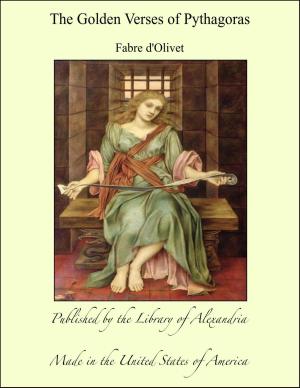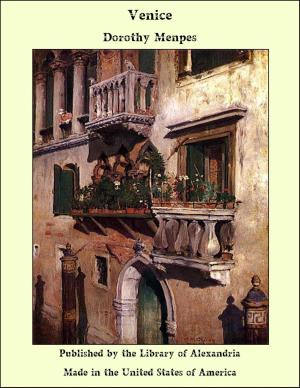Pottery and Porcelain: From Early Times Down to the Philadelphia Exhibition of 1876
Nonfiction, Religion & Spirituality, New Age, History, Fiction & Literature| Author: | Charles Wyllys Elliott | ISBN: | 9781465604101 |
| Publisher: | Library of Alexandria | Publication: | March 8, 2015 |
| Imprint: | Language: | English |
| Author: | Charles Wyllys Elliott |
| ISBN: | 9781465604101 |
| Publisher: | Library of Alexandria |
| Publication: | March 8, 2015 |
| Imprint: | |
| Language: | English |
WHAT we have attempted has been to gather and present, in a way to be easily understood, the most important facts respecting “Pottery and Porcelain.” The study of this interesting subject has for more than a century been constant in Europe, and notably so during the last twenty-five years. A correct knowledge of it may now almost be called a liberal education. In the United States something has been done; and the public mind is now asking, “What is it that makes ‘pottery and porcelain’ so attractive to scholars, statesmen, women, and wits?” In some degree we have answered this question. My part of the work has been to gather where I could such historical and technical facts and such illustrations as seemed most valuable, not only to the student but to the collector. Many of these came from Europe, of course, where since Queen Anne’s day the love of “old china” has at times risen to enthusiasm. But I have drawn from our own collections whenever it has been possible. In the preparation and engraving of the illustrations I hope the judicious critic, as well as the judicious public, will give due credit to the publishers and their artists, who, it seems to me, deserve great praise for having so well done what they have undertaken to do. Permit me to say a word for collectors. Busy men who are making railways and coal-pits, under the pleasing illusion that they are developing the country more than the rest of us, are apt to think a man with any hobby except that of making money is wasting his time. I would like to remind the reader that there are a few—many of them young men and young women too—who have money enough for all reasonable wants, and who do not care to waste time and life in getting more money, for which they have no special uses; these persons find a perennial occupation in the study, the comparison, the purchasing, the collecting, of all that will illustrate their subject of study—their hobby. Around this subject of pottery and porcelain may be grouped, if one so pleases, all the habits, the wants, the inventions, the growths, of human society. Some have yet a notion that the study of the politics and the fightings of man is most important; others, how man came to be an Arminian or an Augustinian; others, whether the sun is or is not gradually cooling down, and must finally cease to be, or whether, on the contrary, its flames are fed by the self-sacrificing stars. Without detracting from their labors, I beg leave to say that my great hobby or central fact being the home, I hold that whatever makes that interesting, beautiful, or useful, is, or should be, interesting, beautiful, and useful, to all the world. I believe that what we call politics, or government, is only valuable in that it helps to create and to protect desirable homes; all the rest—all the speeches, and processions, and crownings, and court-balls, and receptions, and dinners—are “leather and prunella.”
WHAT we have attempted has been to gather and present, in a way to be easily understood, the most important facts respecting “Pottery and Porcelain.” The study of this interesting subject has for more than a century been constant in Europe, and notably so during the last twenty-five years. A correct knowledge of it may now almost be called a liberal education. In the United States something has been done; and the public mind is now asking, “What is it that makes ‘pottery and porcelain’ so attractive to scholars, statesmen, women, and wits?” In some degree we have answered this question. My part of the work has been to gather where I could such historical and technical facts and such illustrations as seemed most valuable, not only to the student but to the collector. Many of these came from Europe, of course, where since Queen Anne’s day the love of “old china” has at times risen to enthusiasm. But I have drawn from our own collections whenever it has been possible. In the preparation and engraving of the illustrations I hope the judicious critic, as well as the judicious public, will give due credit to the publishers and their artists, who, it seems to me, deserve great praise for having so well done what they have undertaken to do. Permit me to say a word for collectors. Busy men who are making railways and coal-pits, under the pleasing illusion that they are developing the country more than the rest of us, are apt to think a man with any hobby except that of making money is wasting his time. I would like to remind the reader that there are a few—many of them young men and young women too—who have money enough for all reasonable wants, and who do not care to waste time and life in getting more money, for which they have no special uses; these persons find a perennial occupation in the study, the comparison, the purchasing, the collecting, of all that will illustrate their subject of study—their hobby. Around this subject of pottery and porcelain may be grouped, if one so pleases, all the habits, the wants, the inventions, the growths, of human society. Some have yet a notion that the study of the politics and the fightings of man is most important; others, how man came to be an Arminian or an Augustinian; others, whether the sun is or is not gradually cooling down, and must finally cease to be, or whether, on the contrary, its flames are fed by the self-sacrificing stars. Without detracting from their labors, I beg leave to say that my great hobby or central fact being the home, I hold that whatever makes that interesting, beautiful, or useful, is, or should be, interesting, beautiful, and useful, to all the world. I believe that what we call politics, or government, is only valuable in that it helps to create and to protect desirable homes; all the rest—all the speeches, and processions, and crownings, and court-balls, and receptions, and dinners—are “leather and prunella.”















